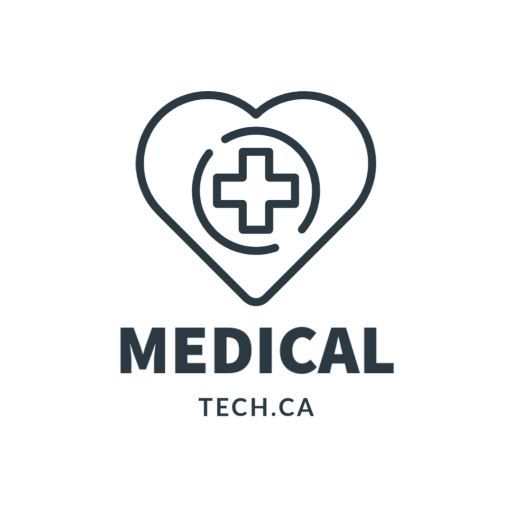by medicaltechont | Mar 30, 2012 | eHealth, Ontario MD, Technology
First, good news for the health-care IT industry: EMR is growing. Whether its incentives or the bottom line, or a desire for better care, EMR is growing by available metrics of usage and sales of software/services. More physicians use it. Its revenue growth of over 14% would be terrific growth for any product or service of course, but may not be growing in usage as fast as government planners or health-care corporations may have anticipated.
Read more
by medicaltechont | Jan 10, 2012 | Microsoft, Technology
Tami Reller, Chief Marketing Officer, Windows, shares a preview of Windows 8 during the Microsoft keynote at CES 2012 in Las Vegas.
by medicaltechont | Mar 25, 2010 | Healthcare, Ontario MD, Technology
By Anne-Marie Tobin (CP) – Mar 24, 2010
TORONTO — As Donna Hammill-Chalk undergoes treatment for breast cancer, she can log onto the website at Sunnybrook Health Sciences Centre in Toronto, type in a username and secure password, and gain access to her medical records.
In Prince Edward Island, her mother, who was diagnosed with breast cancer in December, doesn’t have electronic records – but if they existed, it would be easier for her to share updates on her condition and treatment with her four grown children living in different parts of the world.
“Cancer – you lose all control and you can get some control back by having access to your information,” Hammill-Chalk said in an interview Wednesday from her home in Markham, Ont., where she is recovering from a mastectomy.
“I think in this day and age, patients need to take ownership and accountability for managing their own care. And you can’t do that if you don’t have the information.”
She tells her story in a report card on cancer, released by the Cancer Advocacy Coalition of Canada. The report also calls for more funding for cancer drugs, bans everywhere on smoking in cars with kids and more genetic testing so treatments can be targeted to those who will benefit.
Dr. Pierre Major, chair of the report card committee, said the electronic records system at Sunnybrook, known at MyChart, is the only one he’s aware of that’s available to cancer patients in Canada.
Physicians there have told him they’re happy with it, he said.
“It’s great because patients look up in their chart what the results are, and it saves phone calls. The patients are happy because they can access their results or even change their appointments.”
It’s something that Marlene Nicholson, who lives in Bedford, N.S., can only wish for as she helps her mother navigate the health-care system. She’s Hammill-Chalk’s sister, and has made the three-hour drive to Lower Freetown, P.E.I., on numerous occasions in recent months to support their 69-year-old mom, Margaret Hammill, during her medical appointments.
With one sister in Ontario, another in Bahrain, and a brother in California, she has to relay a lot of information, Nicholson said.
“When the siblings are at a distance, yes, it would be great to be able to just say ‘OK, go here’ or ‘Mom has a password’ or whatever it takes, or if we could send a file … everybody can have access to it.”
Read More
by medicaltechont | Mar 19, 2010 | Healthcare, Technology
Mar 17, 2010
Stuttgart, Germany – Manufacturers of modern medical instruments and implants are faced with enormous challenges. Structures are becoming increasingly smaller, yet demands for the highest quality and accuracy are still expected to be met. This means flawless, smooth surfaces without any residue. “Laser micro processing is the best option here as it removes material without any contact. Furthermore, excellent beam quality and accurate control prevent the spreading of heat or the occurrence of material damage,” explains Mandy Gebhardt, head of marketing at 3D-Micromac.
Read more…
by medicaltechont | Mar 12, 2010 | Apple, Hardware, Microsoft, Technology
By Larry Dignan
The questions of the day are really quite simple: Should you preorder a device you’ve never touched, played with or used in any fashion? And will gadget lust trump logic?
That’s what everyone is wondering. It’s the curse of the early adopter. The logic goes like this:
- I have to preorder the iPad or I may not get one.
- OK, so I’ve never tried it but man it looks good.
- But I want to be the coolest geek on the block.
- And it’s revolutionary.
- No wait, do I really want to plunk down $499.
- Oh why not I’ll order two.
Read More
by medicaltechont | Mar 12, 2010 | Healthcare, Technology
The unprecedented level of detail in EMR clinical data opens new possibilities for defining clinical quality measures in more clinically meaningful ways. However, more detailed data can cause difficulties in ensuring that data across institutions are comparable, according to an article in the online March edition of the Journal of Medical Informatics Association.
Michael G. Kahn, MD, department of pediatrics at the University of Colorado in Denver and Daksha Ranade from the department of clinical informatics at The Children’s Hospital in Aurora, Colo., sought to examine the impact of billing and clinical data extracted from an EMR system on the calculation of an adverse drug event (ADE) quality measure approved for use in The Joint Commission’s ORYX program, a mandatory national hospital quality reporting system.
http://www.healthimaging.com/index.php?option=com_articles&view=article&id=21163:jamia-more-detailed-emr-data-may-make-comparisons-difficult-XX
The Child Health Corporation of America‘s (CHCA) “Use of Rescue Agents—ADE Trigger” quality measure uses medication billing data from 48 nonprofit free-standing children’s hospitals in the U.S. contained in the Pediatric Health Information Systems (PHIS) data warehouse and was used to create The Joint Commission-approved quality measure, according to the authors.
“Using a similar query, we calculated the quality measure using PHIS plus four data sources extracted from our EMR system:…Four versions of the ‘Use of Rescue Agent – ADE Trigger’ quality measure’s numerator and denominator events were developed as SQL-based queries against the EPIC EMR system:
Read More

